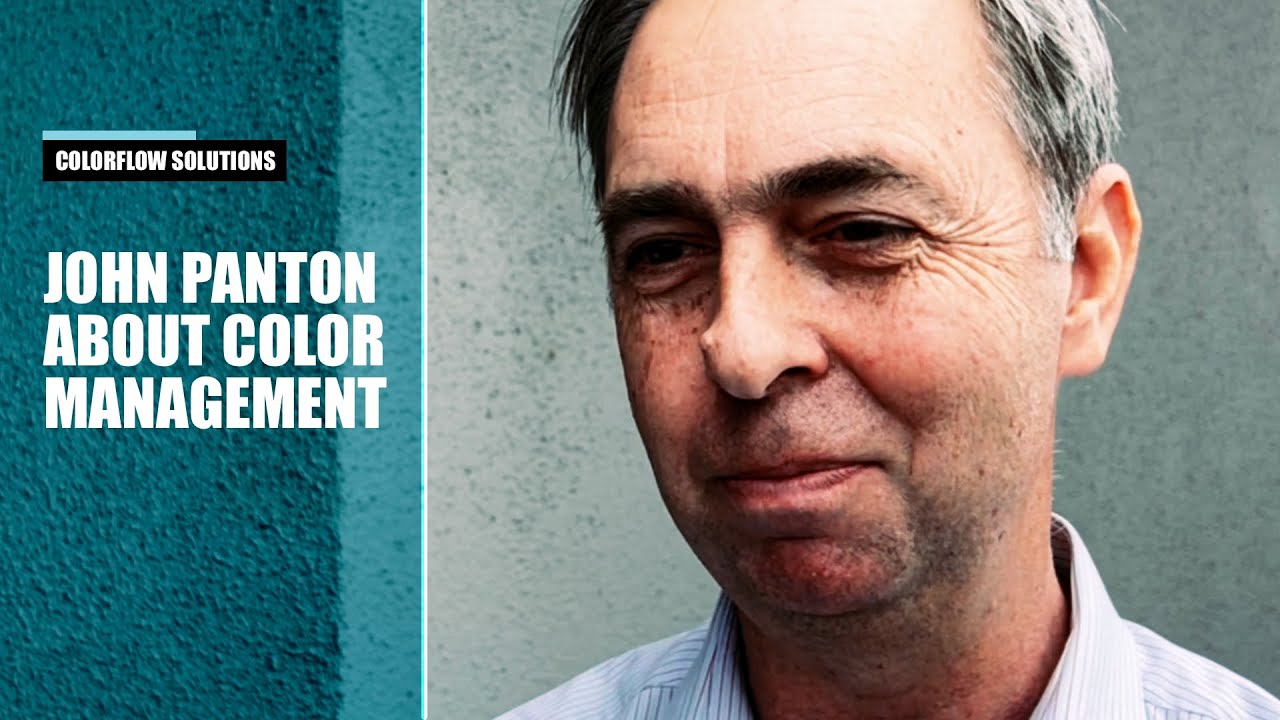About Color Management · John Panton · ColorFlow Solutions
John Panton is a leading capacity in the South African printing industry, and his company ColorFlow Solutions help hundreds of printing companies manage colors. In this interview, John Panton gives you a short background and why color management, even in a digital print space, is necessary. Enjoy!
So we started our business in sort of 1989 I joined the company about 1991 and we were really in engineering software in those early days.
But we stumbled across inkjet technologies in the very early nineties
and then started selling a rip solutions for [relieving] poster short-run poster printing on inkjet. And it’s happened to be related to a lawsuit, which was nothing to do with us, that we lost a distribution.
finding a new partner. I stumbled across a company called Best in Germany at that time. And they were selling a proofing rip. And this was something very new for us. And. It was through that investigation that we started to sell inkjet technology for proofing. And that just happened to be in the perfect timing for us because it was no sooner than maybe one year later, there was the CTP boom in South Africa where a film stopped and everyone went direct to plate.
So we had the many customers, many big distributors in the computer-to-plate arena that became our resales partners at that time. Kicked off our color management business. ,
I think that’s not too true, actually. If you look at color management in the packaging industry today, it’s still highly required this skill. And I’m certain I’m color management also in the digital world is important. So today we find brands become very fussy about their brand colors and they they tend to put some value to that.
And that’s where we come into the business. .
We helped with a project a couple of years ago for Pepsi. And this was really precisely for measuring the consistency of of their can’s across the globe. And so they have a central solution and database where they can see how the performance of the print production is.
No matter where it is. .
I think it’s, in fact, the latest technology makes it quite easy because it makes the communication of information far better. And really, what you’re saying is you’re measuring at the end of the production line. You really need to be. All the way through the production line, starting from ink manufacturer.
So it’s raw materials that are coming in, and then of course it’s production quality management or color measurement. And then of course there should be a QC stage at the end of all of that.
I really think it’s a bit of both. Certainly we see a lot of things going wrong in prepress departments. Between a file exchange between the. The customer design and repress can be a big problem. But certainly on-press production is equally as important. And the press room is is is a moving beast at the best of times.
And you need to have really strong process control. And we really find that this is probably the area that is lacking the most in terms of let’s say modern measurement skills or requirements. ,
I think it’s of course it’s different in a way, in the sense that we color manage the file within the rip in a digital environment, whereas in a, in an offset environment it’s quite different where there’s really no color management between the [playtone] and the press other than the control of the operator.
I would say the, we have a much more scientific or clinical way of working in the digital world. Again, digital presses are not always that stable and one has to have the right tools in place and the right processes or procedures in place to keep them calibrated in the game.
That’s the lacking part of many people that run digital presses.
This is where we see our niche. And this is , absolutely what we do. .
. So we tried to identify the problem and as I said, it can be a prepress related issue. It can be a pressroom related issue. So it can, there are many reasons. And I think again, that’s where we really benefit the industry to make a profile is not a difficult task. Anybody can do it, but you really need to understand the processes in play in order to diagnose the problem and help the customer in the end.
And I think this is where we do a fairly good job.
Print today is changed from an art form to something that’s very much an IT driven platform today. One of the challenges we find is is really the education part in the industry. It’s I’m quite passionate about. But we have to change the mindset. We have to change the mindset away from saying how many pieces of heavy metal can I purchase?
And we need to change the mindset to saying, let’s look at workflow automation. Let’s look at upskilling our people and that I think we’ll certainly pay dividends to, to our customers in the end of the day.


































































